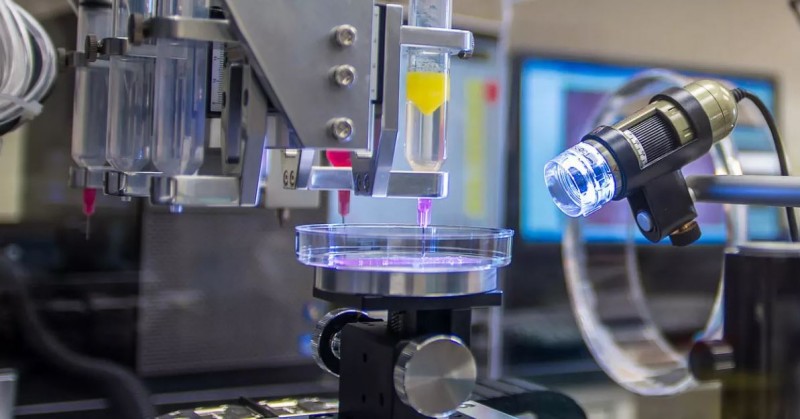
In recent years, 3D printing technology has revolutionized various industries, and medicine is no exception. The advent of 3D printing in medicine has brought about a paradigm shift, enabling healthcare professionals to offer personalized healthcare solutions like never before. This article explores the vast potential of 3D printing in medicine, its applications, advantages, challenges, and the exciting future it holds.
Understanding 3D Printing
What is 3D Printing?
3D printing, also known as additive manufacturing, is a process in which three-dimensional objects are created layer by layer from digital models. Unlike traditional subtractive manufacturing methods, 3D printing allows for the production of complex and customized structures with incredible precision.
The Evolution of 3D Printing in Medicine
Initially used for creating prototypes and basic tools, 3D printing has evolved significantly in the medical field. Today, it plays a critical role in developing cutting-edge medical solutions that are tailored to individual patients' needs.
Applications of 3D Printing in Medicine
Custom Prosthetics and Implants
One of the most impactful applications of 3D printing in medicine is the creation of custom prosthetics and implants. Traditional prosthetics are often standardized, leading to discomfort and limited functionality for patients. 3D printing allows for the fabrication of prosthetics and implants that precisely match the patient's anatomy, resulting in enhanced comfort and better outcomes.
Surgical Guides and Planning
Surgeons can use 3D-printed models of a patient's organs or body parts to plan and practice complex surgeries. These surgical guides provide valuable insights and allow for meticulous preoperative planning, reducing the risk of complications during the actual procedure.
Organ and Tissue Printing
The prospect of 3D printing entire human organs may seem like science fiction, but it's an area of intense research. While complete organ printing for transplantation is still in its early stages, scientists have made significant strides in bioprinting tissues and small organoids. This breakthrough could potentially solve the organ shortage crisis and save countless lives.
Pharmaceutical Printing
Personalized medicine is gaining traction, and 3D printing contributes to this field by enabling the production of custom medications. Dosages and formulations can be tailored to individual patients' needs, improving treatment efficacy and reducing adverse effects.
Medical Devices and Instruments
3D printing facilitates the creation of complex medical devices and instruments with intricate designs. This includes items such as surgical instruments, hearing aids, and dental appliances. The ability to customize medical devices ensures better patient comfort and satisfaction.
Advantages of 3D Printing in Medicine
Personalization and Customization
Personalization is at the core of 3D printing in medicine. Each patient's unique anatomical characteristics can be precisely replicated, leading to tailored treatments and improved patient outcomes.
Faster Prototyping and Manufacturing
Traditional manufacturing methods often involve lengthy prototyping processes. With 3D printing, medical professionals can rapidly iterate and create prototypes, accelerating the development of new medical solutions.
Reduced Costs and Waste
3D printing allows for more efficient use of materials, reducing waste and cutting down on costs associated with traditional manufacturing techniques.
Improved Surgical Outcomes
The use of 3D-printed surgical guides enhances surgical precision, ultimately leading to better outcomes and faster patient recovery.
Medical Education and Training
Medical students and professionals can benefit from 3D-printed models for educational purposes. Hands-on experience with lifelike replicas of human anatomy can significantly enhance medical training.
Challenges and Limitations
Regulatory and Ethical Concerns
As 3D printing in medicine becomes more prevalent, regulatory bodies must address concerns regarding quality control, patient safety, and ethical considerations.
Quality and Standardization
Ensuring consistent quality and standardization across 3D-printed medical devices and implants poses challenges due to varying materials and technologies.
Material Selection and Biocompatibility
Choosing suitable materials that are both biocompatible and meet the specific mechanical requirements of medical applications remains a complex task.
The Future of 3D Printing in Medicine
The potential of 3D printing in medicine is boundless. As technology advances, we can expect to see more breakthroughs in bioprinting, organ transplantation, and personalized medicine. Additionally, regulatory frameworks will evolve to ensure safe and ethical practices.
The integration of 3D printing in medicine marks a new era of personalized healthcare solutions. From customized prosthetics to groundbreaking organ printing, this technology has the power to transform medical treatment and significantly improve patient outcomes. While challenges exist, ongoing research and collaboration among experts promise a future where 3D printing revolutionizes the healthcare landscape.
CryptoArt and NFTs: The Intersection of Blockchain and Art
Biometric Authentication: Enhancing Security and User Experience
Brain-Computer Interfaces: The Future of Human-Computer Interaction